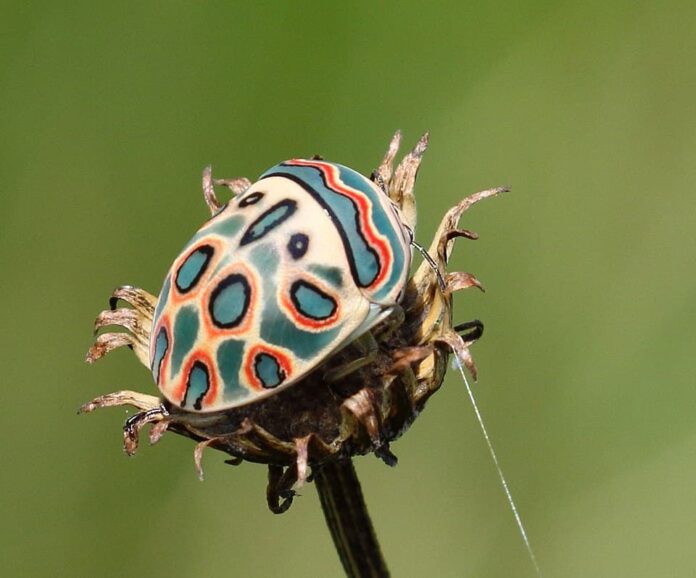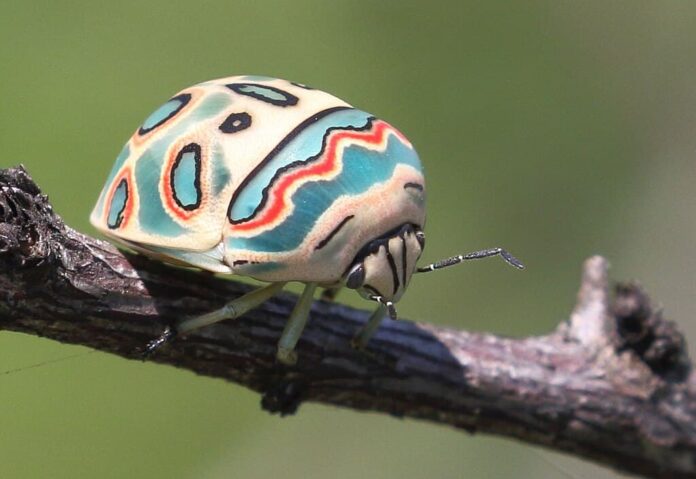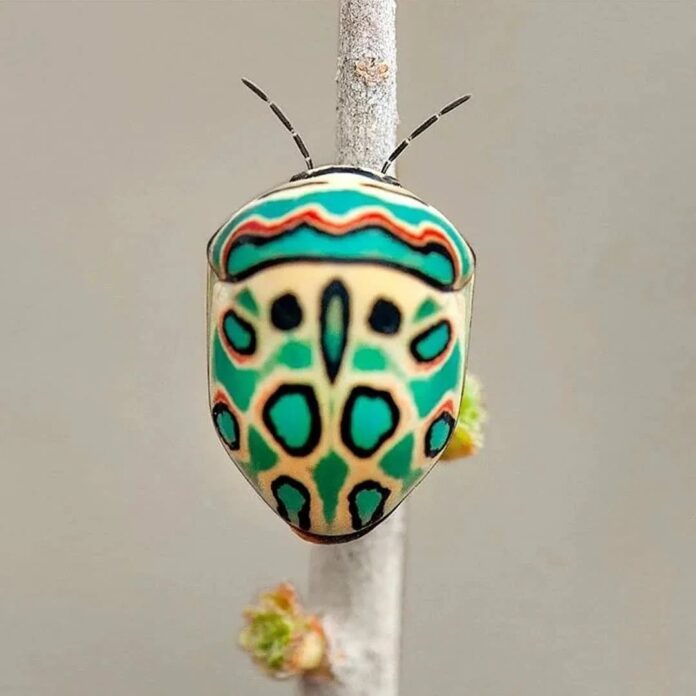The Picasso bug aka Zulu hud bug, is truly a work of art, and its back says it all. In nature, the bright colors are never just for show when it comes to little animals; it is a warning. Eat me, and you’ll experience inconvenience. So what is the inconvenience behind these gorgeous patterns? Let’s find out more below.
1Appearance

As a teeny tiny bug, a Picasso bug is only 1.5 centimeters in size. It has a green base color, and the artistic part is the 11 ring-shaped spots on its scutellum. Four rings on the left and four on the right, along with two round rings and one elongated ring on top. Each ring is green, black, and reddish-orange, making it look super bright and eye-catching. This color is to tell the predators that they are not pleasant to eat. A Picasso bug can emit a noxious odor when disturbed, and its taste is not appetizing either. This is also why they are also known as stink bugs due to their ability to release pungent smells. However, these warning signs don’t always work. This little work of art still falls prey some hard-core animals like birds, centipedes, frogs, lizards, scorpions, small mammals, and spiders.
2Feeding & Habitats

Picasso bugs occur in tropical and subtropical Africa, with a wide range across many countries. It is common to see them hanging out on cotton plants, flowering plants, and flowering trees where they grow up and reproduce. They feed on the host plants by piercing the plants’ fruits, leaves, and stems using their mouthparts to suck the fluids. Female Picasso bugs deposit their eggs on the undersides of leaves of their host plants. The young nymphs spend most of their time in flowers feeding before molting 2 months later. Where they are from, they are one of the most beautiful and colorful bugs, what do you think?
Related Post: Weird Bugs You Should See




